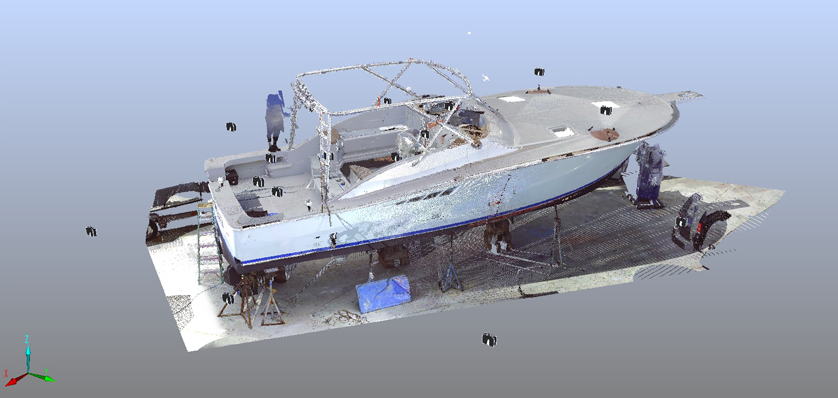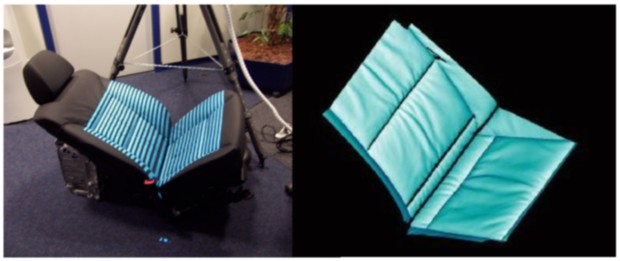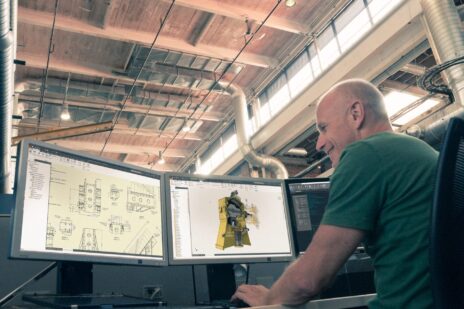
3D scanning currently holds a similar space in the design realm that 3D printing did in its infancy. Many of us as engineers may view it as an interesting tool, but you likely don’t see it drastically affecting your design process. This is a natural response to such a technology, but let’s take a closer look at how the tool is evolving and becoming more adept at solving our modeling problems and improving our workflows.
Noted by Engineering.com, 3D scanning as an industry is expected to grow at a compounded annual growth rate of 9.6% until 2022. This expected growth comes as scanning machines enable engineers to measure parts at highly accurate levels. Certain laser scanners can reach tolerance levels over .0015 mm, giving an easy, practical direct conversion method from physical to design space.

Image Source: Wikimedia
All of this means nothing though if we can’t address the main issue surrounding 3D scanning technology: it’s usefulness.
To an untrained eye, 3D scanning seems like the solve all to designing – just scan in an object to a computer and reproduce it! This hyped up attitude seems fine, but to us as engineers, we realize it isn’t that simple. We have to think about manufacturability, accuracy, reproducibility, and workability, among so much more.
If a 3D scan is only manufacturable through additive manufacturing, then we’re bound by the constraints of that method. If the accuracy of a scan has too large of a tolerance, then the scan is nothing more than a digitized visual aide. If we can’t take a scan and apply it to our CAD models, then it’s essentially worthless to the design process. This is where constantly improving software comes into play.
Autodesk’s Recap takes 3D scanned images from drones and turns it into a workable point cloud, among other things usable in BIM. This tool is on the cutting edge in the BIM world of 3D scanning, but what about practical applications of 3D scanning for the mechanical design space?
We can use software tools like Factory Design Utilities to incorporate 3D scans into workable factory models useable for planning and layout. You can take 3D scans and import them into Autodesk Inventor to incorporate into your design. The potential applications are there, we just have to be willing to experiment with them as they constantly improve.
Arguably one of the most valuable aspects in the design process that 3D scanning is aiming to solve, is the reverse engineering process.

Image Source: Wikimedia
By importing a 3D scan into your Inventor workspace and understanding this rudimentary model’s accuracy, you can begin to reverse engineer a part. Whether you utilize this for failure resolution or just reproducibility of a previous design – whatever your end goal is in the reverse engineering process – 3D scanning poses one of the best digital tools for this job.
If we wanted to recreate a physical part in our design space without 3D scanning, we would need extensive measurements and likely constant reference to the physical part. Scanned models, however, can act as a workflow modifier in this process giving us a digital reference to work alongside our physical part. We can reference the 3D scan natively to our CAD tools while still referencing the physical part only when needed. 3D scanning in this instance keeps you focused on the actual design rather than having to stop your workflow and take physical measurements.
All these applications draw back to our main discussion here to how 3D scanning will affect the future of modeling. Our modeling will become more accurate in the reverse engineering process. We will begin to see the ability to take a 3D scan and transform it directly into a model as machine learning and AI CAD tools only improve – shortening our work even further. We’ll ultimately begin to see more automation brought along with the aide of 3D scanning, allowing us as engineers to focus on improving the design, rather than the tedious model set up.
3D scanning means a lot for the future of modeling and while its technologies may not be at a level needed for your specific application, that useability it coming. All this to say, don’t discount it because it may not be there yet, rather wait patiently for it to steadily improve the tools at your fingertips as an engineer.


